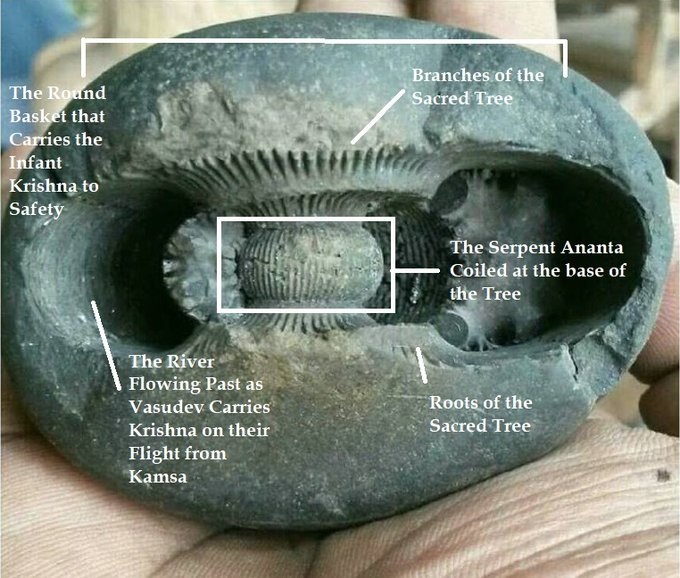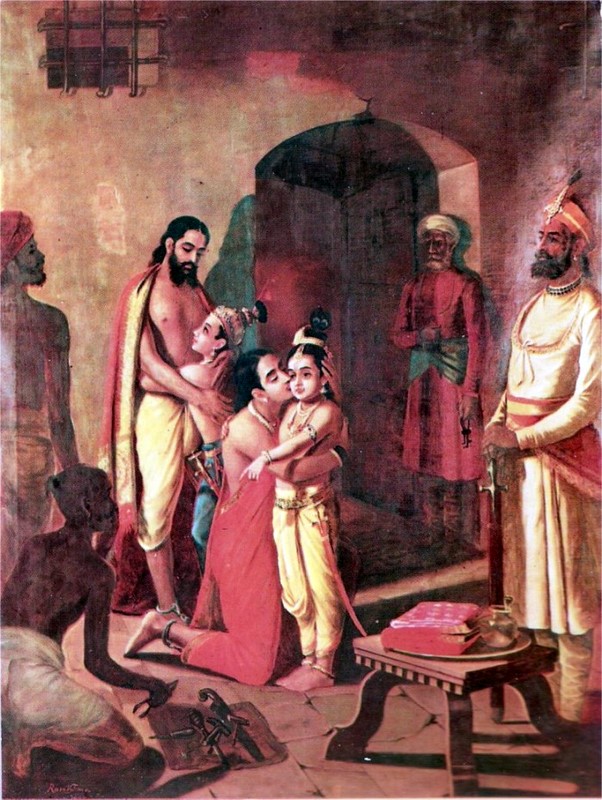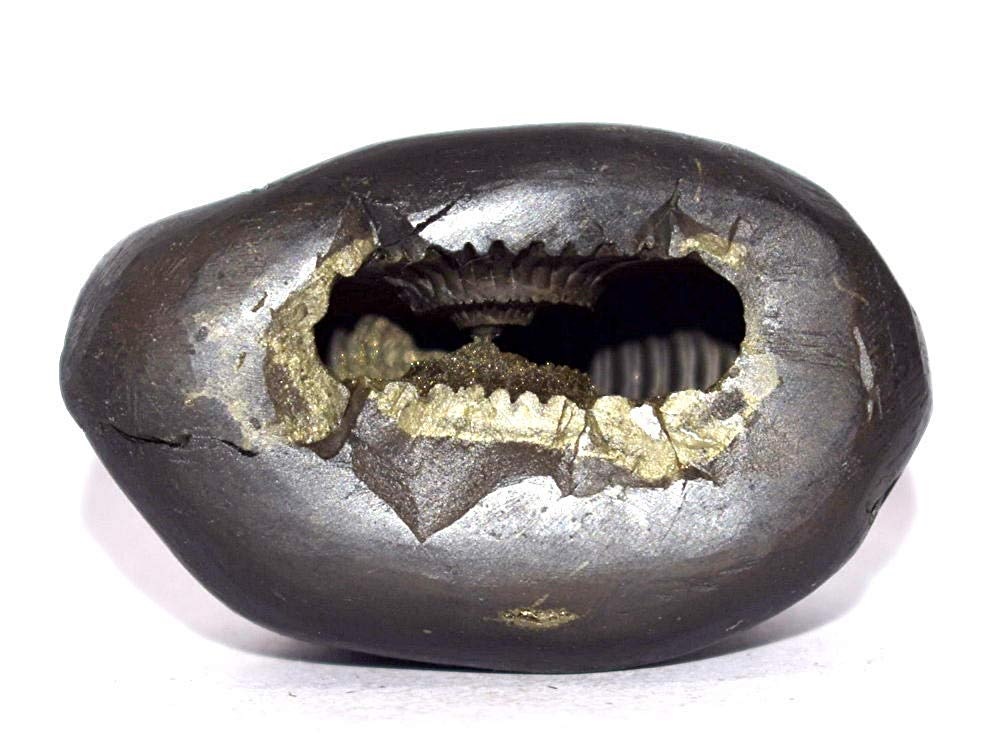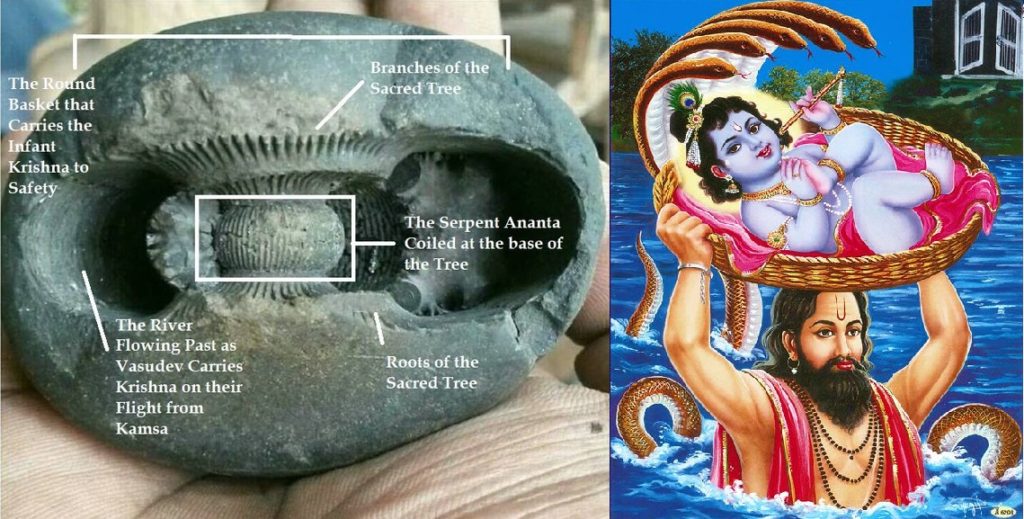One thing I love about Shaligram interpretive practices is how extensively narrative they are. As in, not only does each specific ammonite fossil invoke stories about the geological origin of the world, they also link to mythographic histories of people.
This is something that I have spent a tremendous amount of time thinking about as I now begin work on my second manuscript dedicated to discussing Shaligram interpretation (my first book on Shaligram pilgrimage will be out next year). I am still having some issues working out a format, however. On some level, the current work already looks something like a “field guide:” a short chapter introducing the methods of interpretation and reading Shaligrams (as one might a text) followed by separate, dedicated, pages for identifying each type of Shaligram currently in practice. But I still worry that this format leaves something to be desired. How, for example, do I ensure that the nuances of interpretation are clearly expressed? Or the variations between different Hindu, Buddhist, and Bon traditions? Or, even just attempting to boil down the multiple linkages and complexities of a single set of stories as they are expressed in a particular Shaligram without seeming tragically reductionist.
Take the Vasudev Shaligram, for example (shown below). Vasudev carries a wide variety of meanings depending on the particular Hindu tradition in question. To start with, in Indian epic poetry, Vasudeva is the father of Krishna.

He was also the brother of Nanda Baba, the chieftain of the cowherder tribe, who was a Surasena (an ancient region corresponding to the present-day Braj region in Uttar Pradesh, India) who also became the foster father of Krishna.

His sister Kunti was married to Pandu, both significant figures in the Mahabharata, but in other interpretations, Vasudeva was a partial incarnation of Rishi Kashyapa (a famous Hindu sage) as well as one of Vishnu’s four vyuha avatars who received specific attributes of Vishnu but not his entire incarnation (See also the Anirudda and Pradyumna Shaligrams, which figure similarly). Additionally, following the advent of Bhagavatism in the 1st millennium BCE, the patronymic VÄsudeva (with long Ä) has also remained a popular name of Krishna. So, even in this short explanation, “Vasudev” acts as a kind of short-form for a wide variety of possible interpretations; none or all of which might be in play depending on the Shaligram or, for that matter, the interpreter.
According to many Shaligram traditions, on the other hand, the Vaasudev Shaligram is marked by both Åšesha (Ananta), the eternal serpent who appeared to protect the infant Krishna as Vasudeva carried him across the river during his flight from the demon Kansa and Kalpvriksha, the sacred tree along the river banks. Typically, these Shaligrams are identified using their long oval shapes and the appearance of a central spiral opening representative of the serpent Åšesha.

Ideally, they will then also contain a tree-like marking of grooves or lines somewhere else along the outer surface (which are more pronounced in the Shaligram below).

In practice though, Vasudev Shaligrams are more commonly associated with the stories of Krishna’s father than with Vishnu specifically. As such, they are said to grant enormous physical strength to devotees in times of trial and to encourage all practitioners in their vicinity to adopt stout hearts and minds whenever troubled. This “never give up†atmosphere of ritual veneration also makes them especially popular as gifts to those who are ill or who have recently suffered tragic circumstances in their lives.
For this reason, Vasudev Shaligrams are primarily identified through a combination of features relating to the story of Vasudev and the infant Krishna’s flight from Kansa rather than many of the other possible meanings of the term. Specifically a round or oval shape (a basket), a central spiral opening with two chakras (spirals set one above the other), and other grooved markings representative of tree roots or branches (Kalpvriksha) – or conversely a central, grooved, ring representing Ananta, the serpent: the presence of all such characteristics indicating the Shaligram’s association with this particular tale.

But, as you might imagine, this is a lot of information to fit onto a single page of an ostensible field guide. There is simply so much information and so many linkages within so many traditions, I could, in all honestly, spend a lifetime writing a separate book for each Shaligram. What a voluminous set that would be!
Maybe my original idea of setting up a kind of database with scans and links wasn’t such a bad idea after all. Alas! If only there were more hours in a day…

Whoa!! I am fascinated with your depth of knowledge. I had saved this blog to read later when I had some time on my hands and I am so glad I did, because I would never have found it later on.
You are so lucky to have spent so much time on this subject and not only read about it but actually experienced it. Wow!